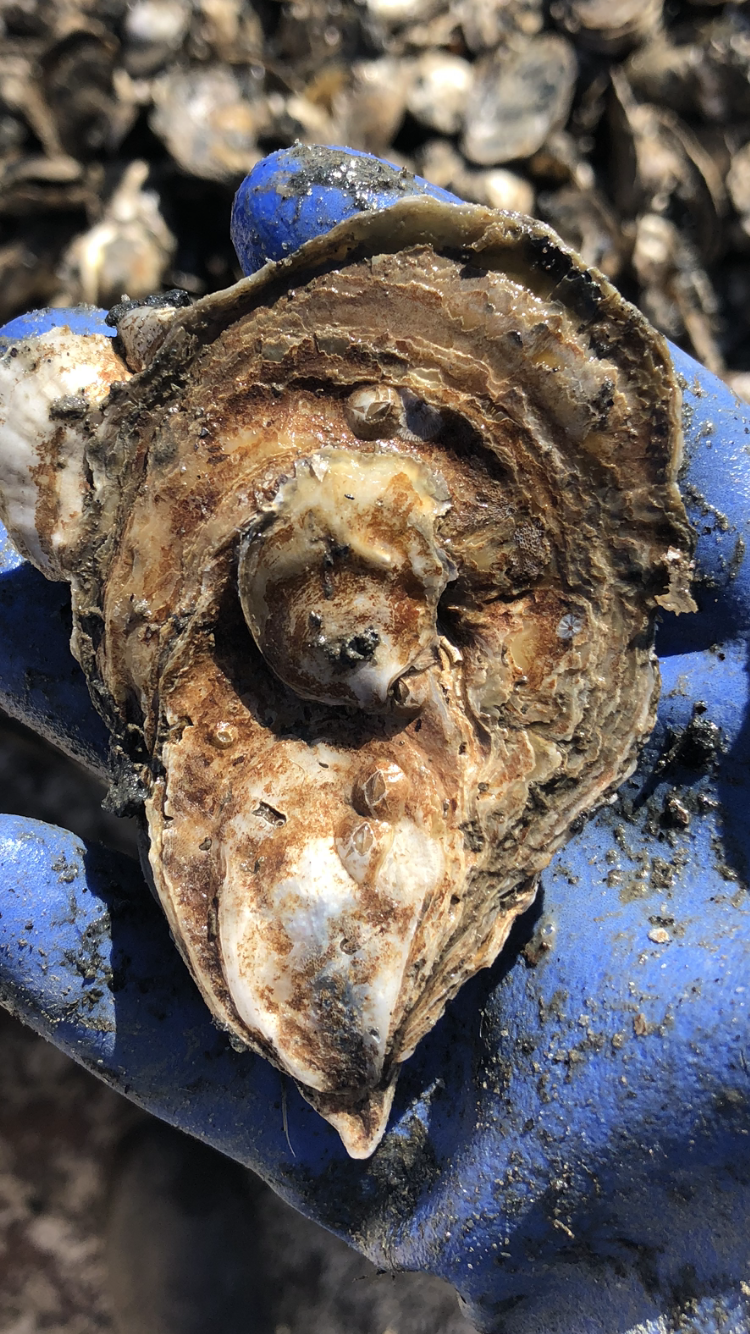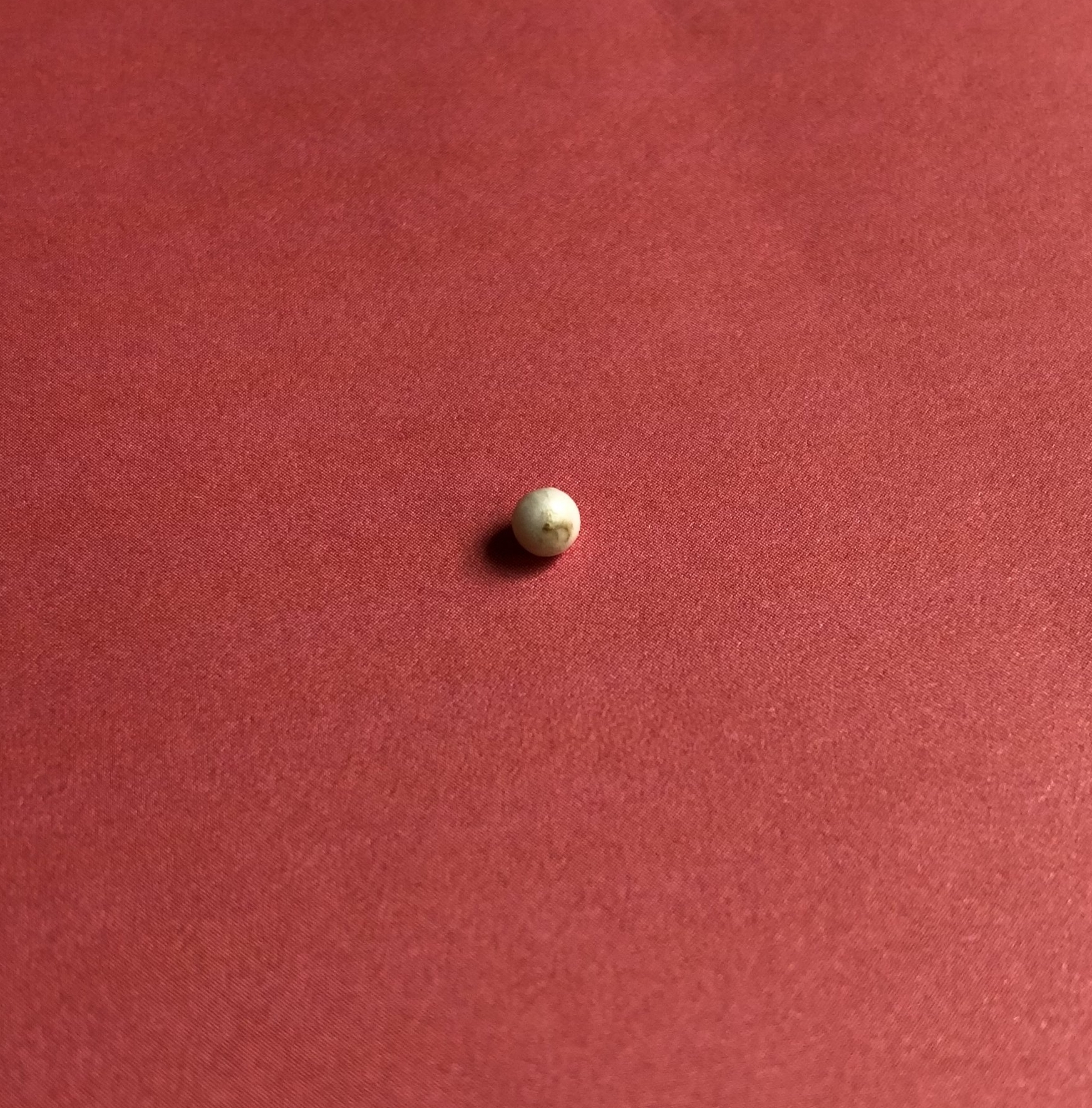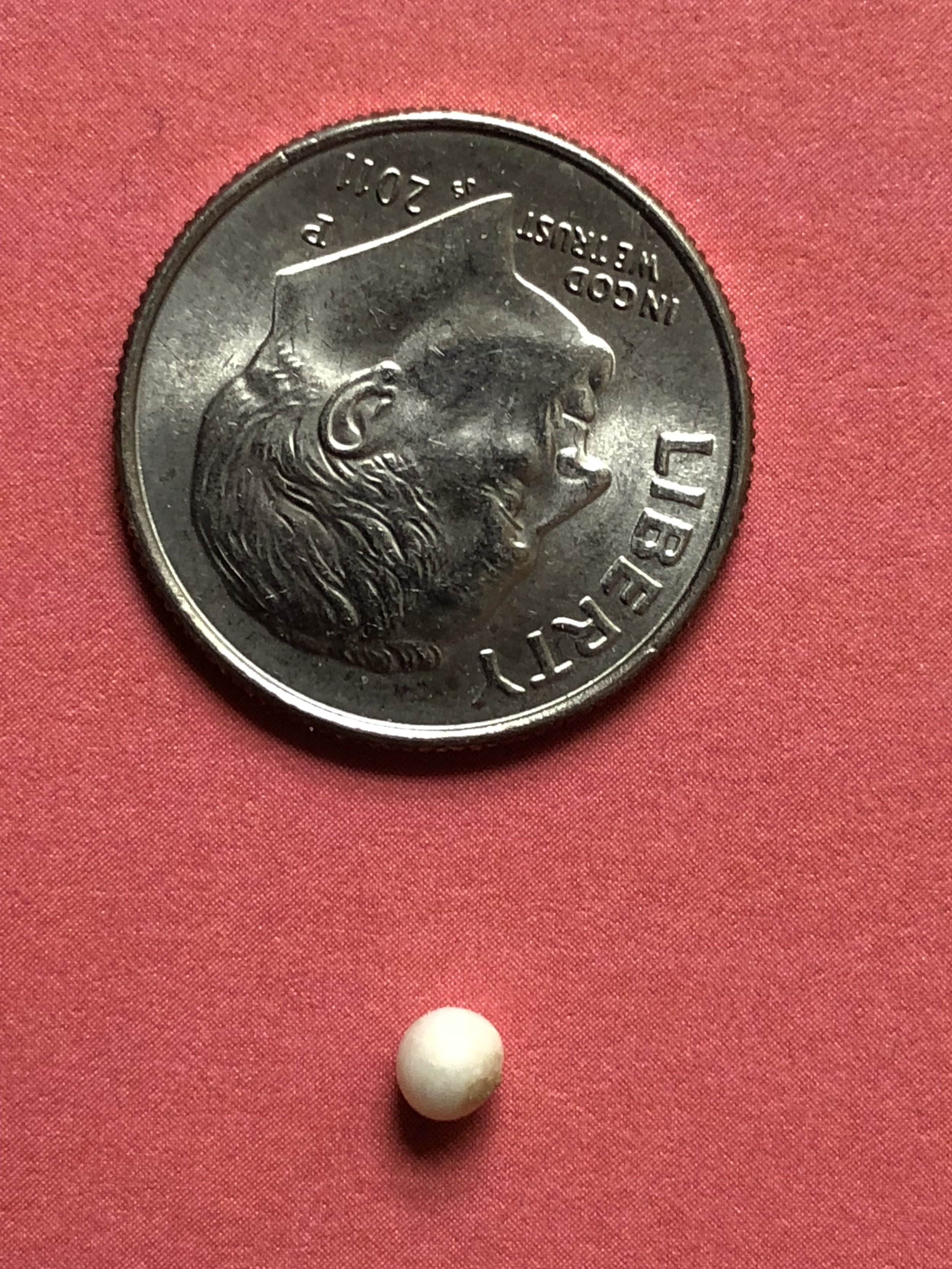We primarily grow hatchery spawned Eastern oysters (Crassostrea virginica) and dabble a bit during the winter months with naturally set wild Eastern oysters. Although they are the same species and grow in the exact same river, the farm raised oysters differ greatly from the wild oysters in size and taste! Our farm raised oysters are grown for life on the half shell but our wild oysters are different; they resemble the “original” Blue Point oyster and are way larger, meatier and sometimes require a knife and fork to eat!
Although we have experimented with different sizes, due to our current growing system and constraints, we usually bring in 4-6mm seed from the hatchery. Our little seed then goes through a variety of different stages on the farm before they are culled from the population and sent to market. Our farm is located in the mouth of the Hammonasset River (Madison/Clinton CT) and is a fantastic site for growing oysters (except in the winter!). Our oysters get a ton of freshwater in the spring (which although not preferable to the oysters, doesn’t kill them and even detracts from certain deadly parasites from the growing area) and some really warm, salty water in the heart of the summer. In addition, at least 2/3’s of our farm is intertidal (exposed to air at low tide) which does indeed affect the growth of our seed. Finally, when ready, our harvestable product is depurated into colder, deeper, saltier water for a minimum of 2 weeks before it is brought to harvest. I believe that the last stage, when our oysters are in deeper saltier water, gives them an amazing combination of sweet and salty tastes that is very pleasing to the palate!
Some of our quick growers will reach market in 12 months and others will take over two years to reach market size. We have found that our farm site supplies our oysters with incredible amounts of nutrients during the growing season, so much so, that we sometimes wish they would grow slower! Sometimes, fast growing oysters will inherit the not-so-liked trait of brittleness which is not good for the shucker or restaurant. We employ a variety of steps in our growout; from spat bags to mesh bags of different sizes (4mm, 1/4”, 1/2” etc.), until they finish off in larger 2” meshed cages before harvest.
Another obstacle that our farmed oysters deal with is not really an obstacle but more of a part of life! Our farmed oysters spawn typically every July (give or take a few weeks). Due to this, our oysters go through some immense metabolic changes during the spawning season and this makes them taste differently. We consider this a bonus! But, we do have to deal with our babies, babies because they like to attach to everything, including their parents. So, every year we typically experiment with new and excited ways to capture some of these freely swimming babies and make them our own. Although not a true and tested way to model your business, any help that we an get from nature is appreciated!
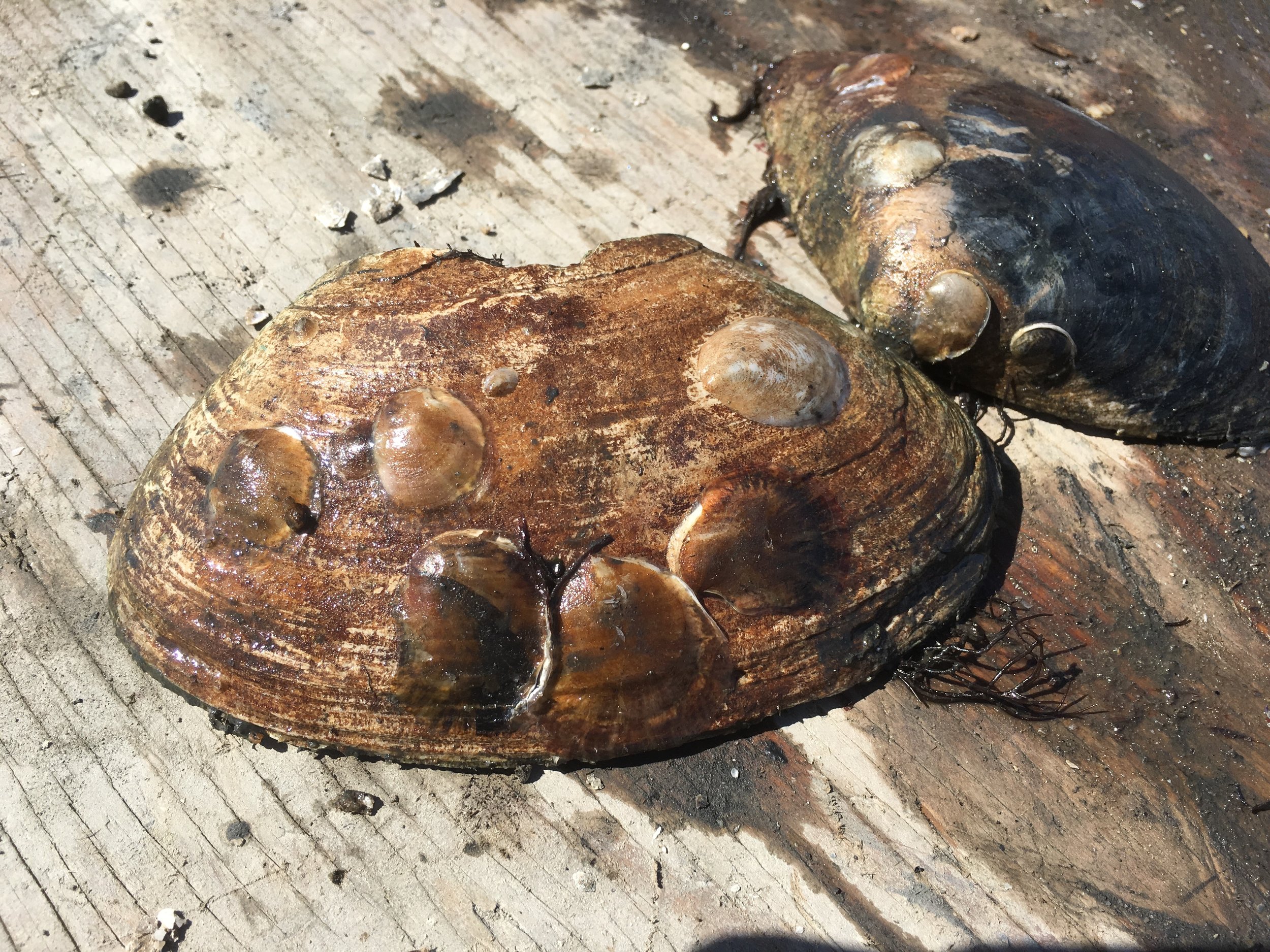
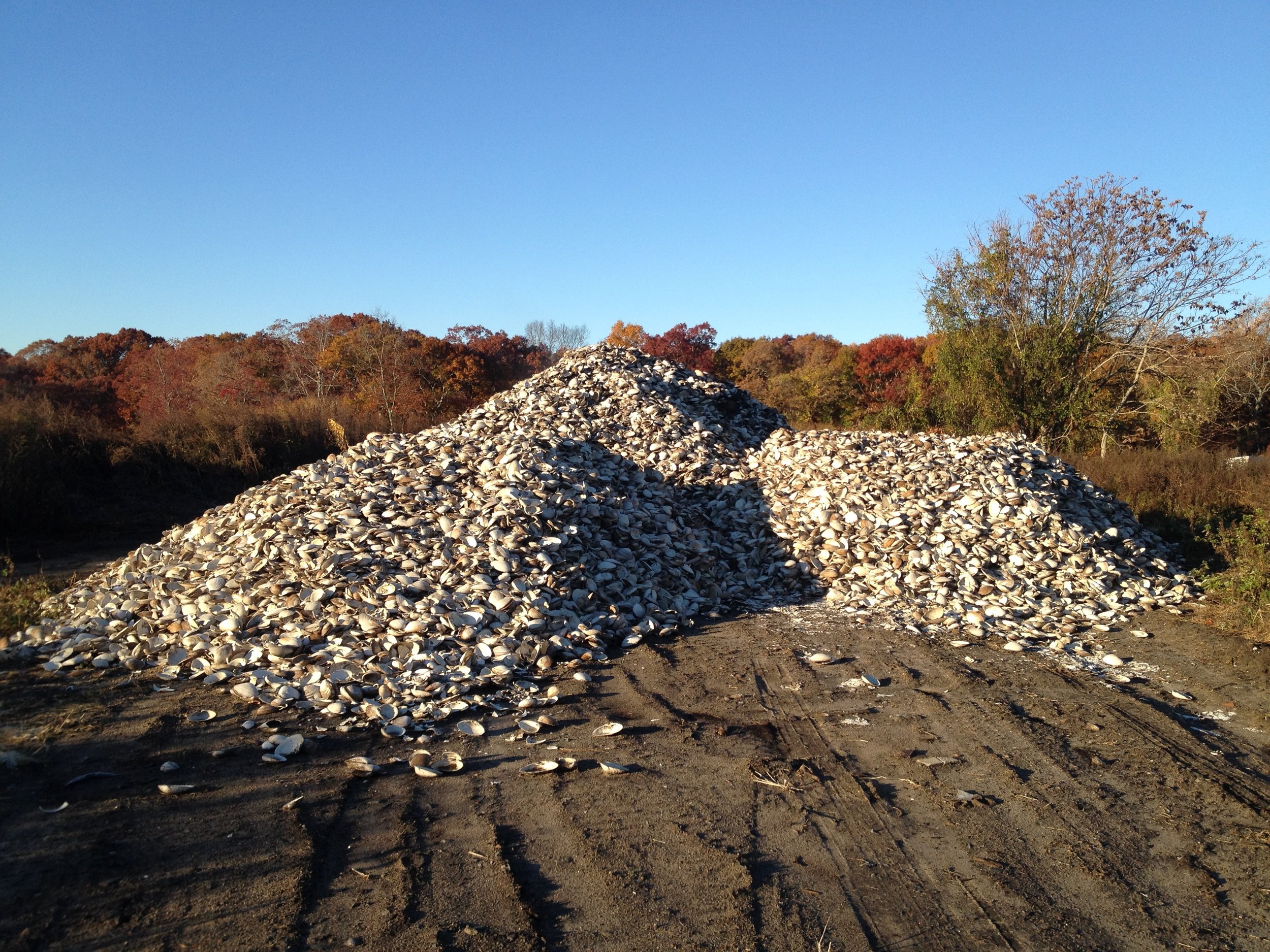
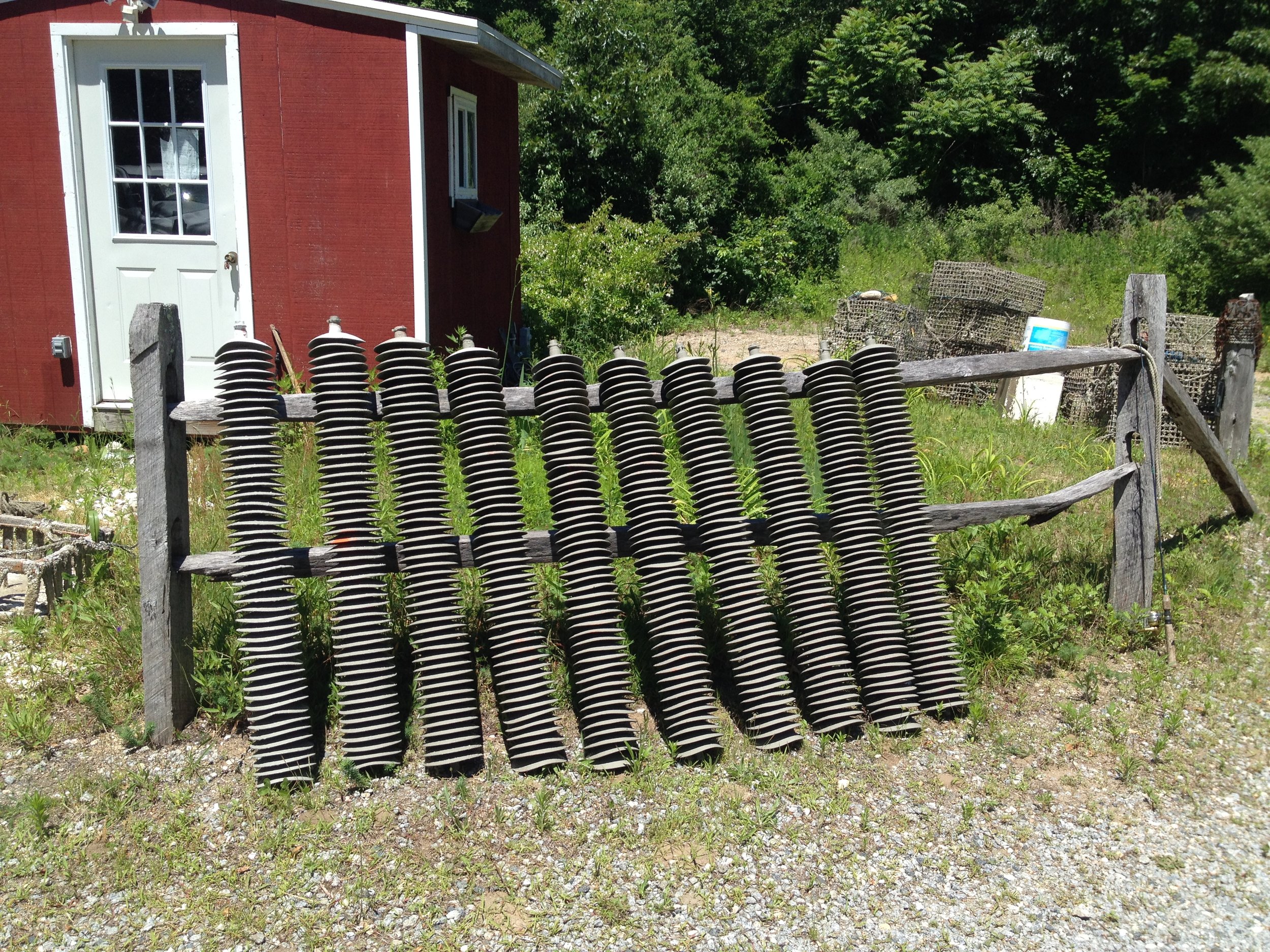
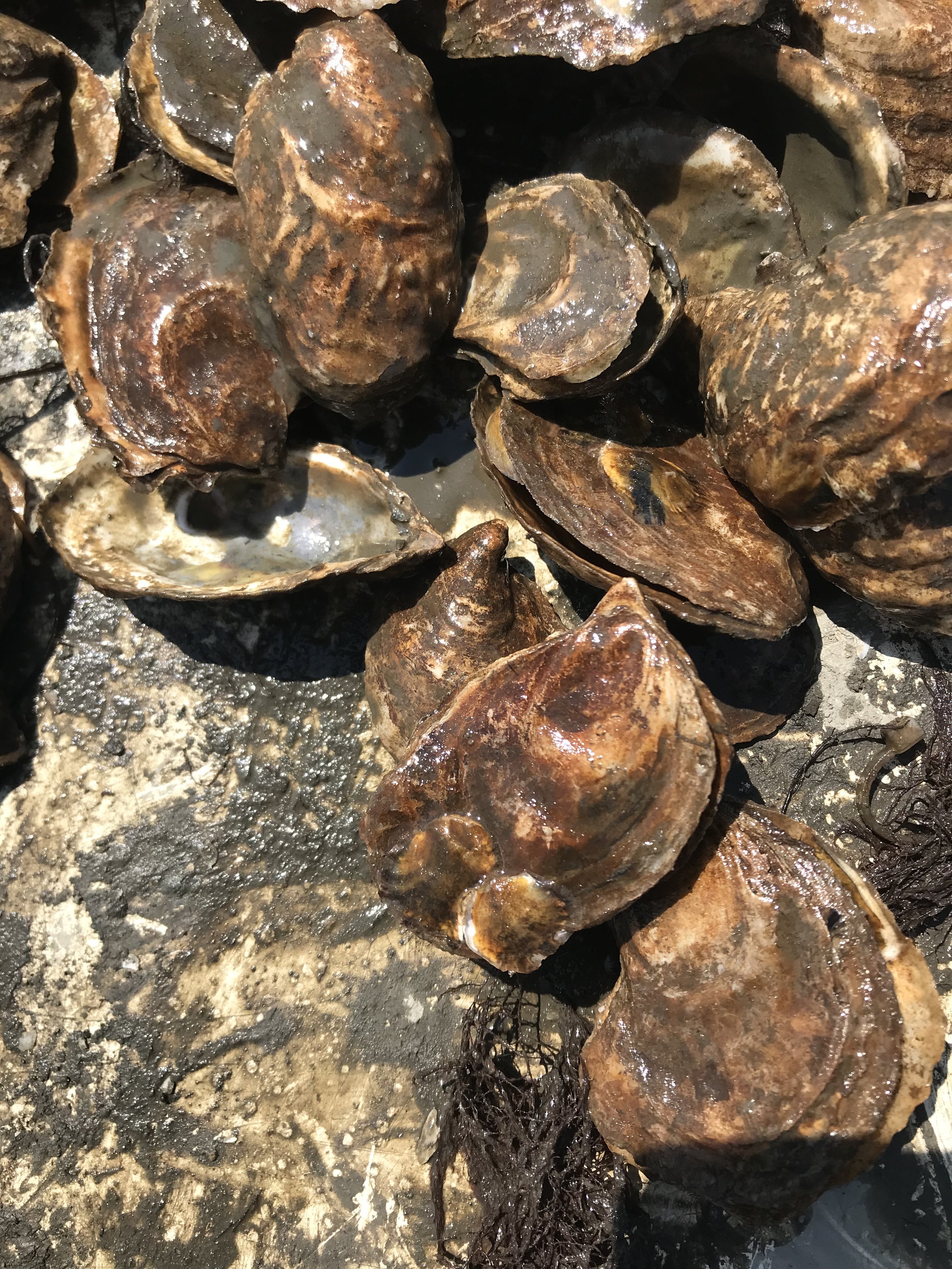

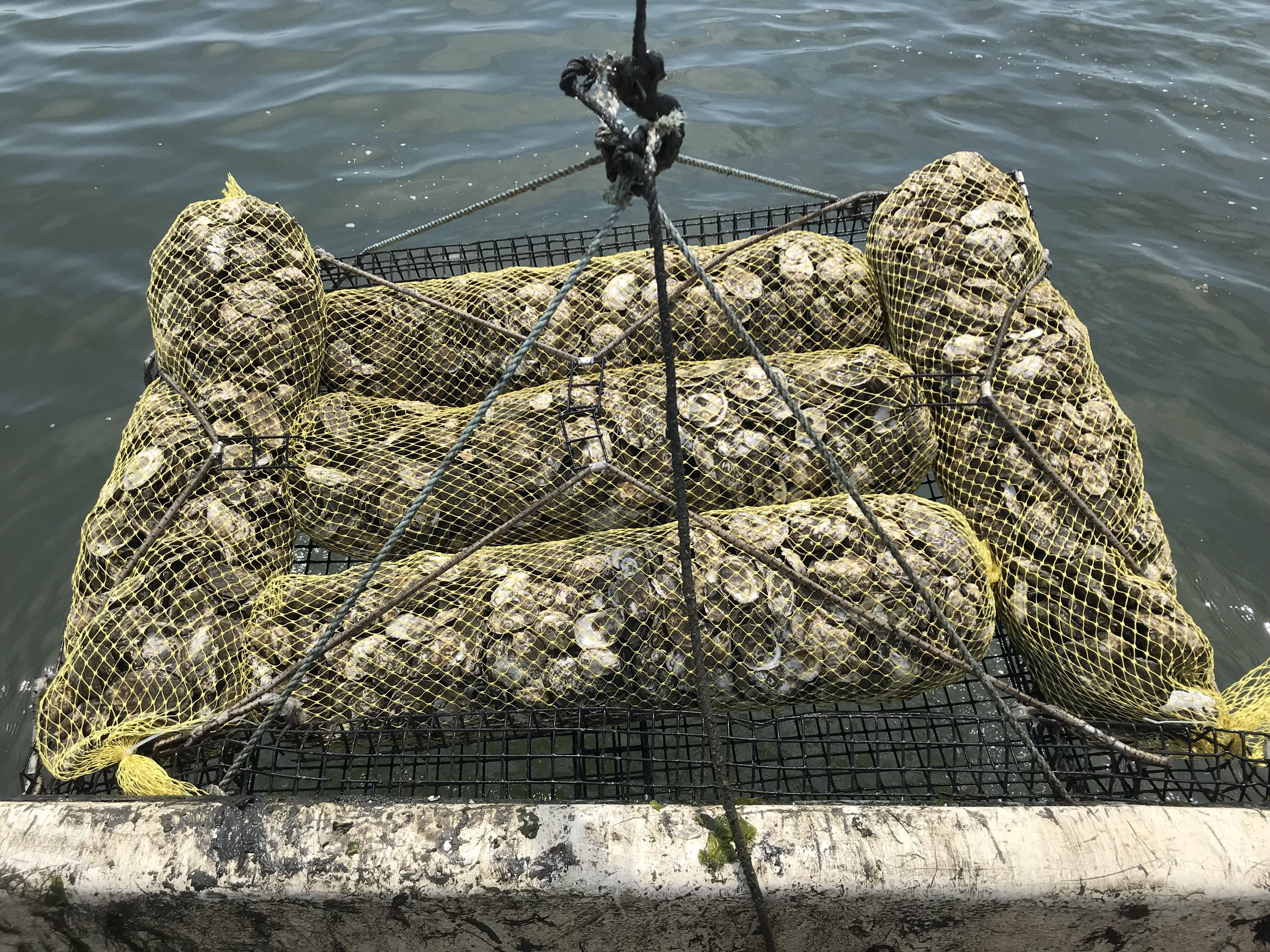
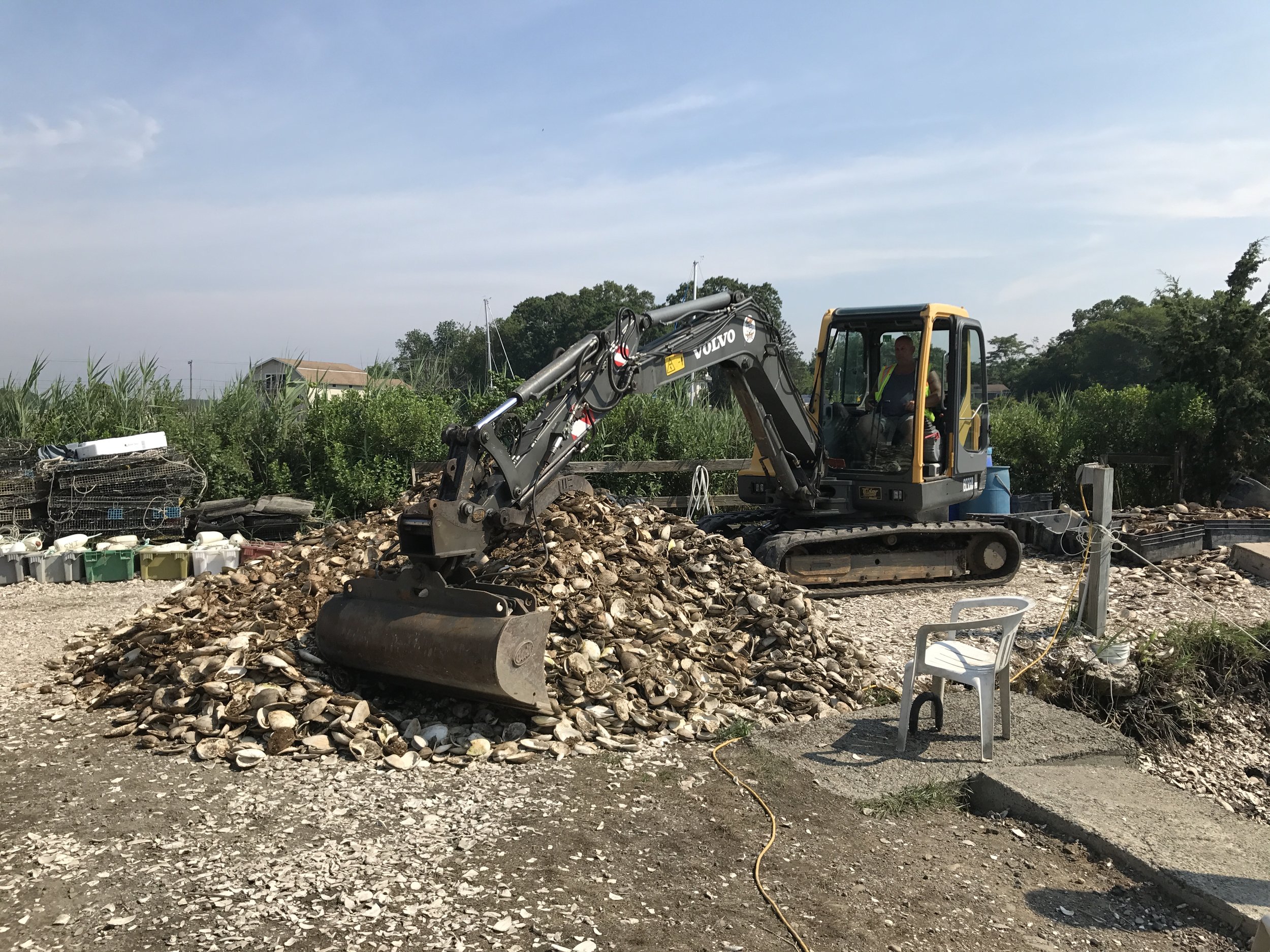
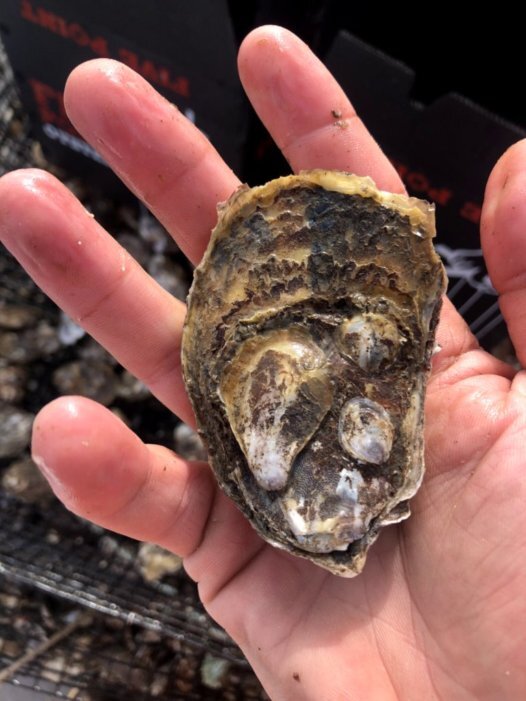
What about pearls? They are supposed to come from oysters right? YES! but that’s only part of the story. Although oysters (including eastern oysters) make pearls or “some sort of pearl” they are not the valuable type that you’ll find at the jewelry store. However, they make a really cool momento and yes we’ve gotten a few!! I can’t speculate on the probability of this but I can guess its really, really small, but; George’s son-in-law was chowing down on some of our finest and CRACK he chomps down on something really, really hard. He said he thought he broke a tooth! But, he spit this little puppy out… Yup, our oysters make pearls and this is what they look like!



